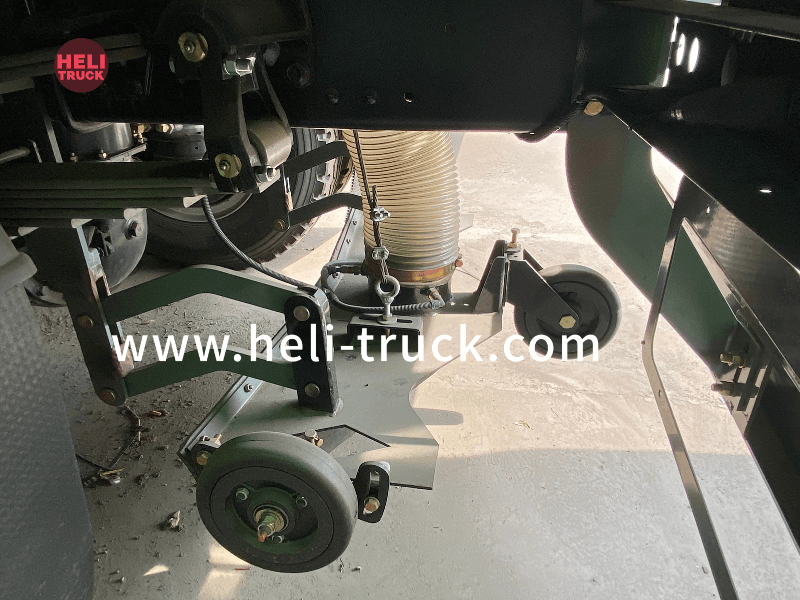The Evolution of Fire Truck Technology A Comprehensive Look into the Future of Firefighting
Introduction:
Fire trucks have been an essential component of firefighting for centuries, evolving from simple water pumps to today's sophisticated vehicles equipped with advanced technology. In recent years, significant advancements have been made in fire truck technology to enhance the effectiveness and safety of firefighting operations. This article will explore the evolution of fire truck technology and provide insights into the future of firefighting in the 21st century.
Historical Evolution of Fire Truck Technology:
The history of fire trucks dates back to the 17th century when the first fire engines were developed to transport water to extinguish fires. These early fire engines were horse-drawn and equipped with hand-operated pumps to deliver water to the fire scene. Over time, steam-powered fire engines were introduced, revolutionizing firefighting capabilities by increasing water pressure and delivery efficiency.
In the early 20th century, motorized fire trucks began to replace horse-drawn engines, offering greater speed and mobility to firefighters. The introduction of aerial ladder trucks allowed firefighters to access tall buildings and provide rescue operations from elevated positions. With the advent of internal combustion engines, fire trucks became more powerful and reliable, enabling firefighters to respond quickly to emergencies.
Modern Fire Truck Technology:
Today's fire trucks are equipped with a wide range of advanced technology to enhance firefighting capabilities and improve operational efficiency. Some of the key technological features found in modern fire trucks include:
1. Advanced Communication Systems:
Modern fire trucks are equipped with state-of-the-art communication systems that allow firefighters to communicate effectively with each other and with dispatch centers. These systems include radios, GPS tracking, and mobile data terminals that provide real-time information on fire incidents and locations.
2. Integrated Vehicle Control Systems:
Fire trucks now feature integrated vehicle control systems that provide firefighters with centralized control over various vehicle functions, such as pump operations, lighting, and equipment deployment. These systems help streamline firefighting operations and improve response times.
3. Enhanced Fire Suppression Systems:
Modern fire trucks are equipped with advanced fire suppression systems, including high-pressure water pumps, foam dispensing systems, and compressed air foam systems (CAFS). These systems enable firefighters to extinguish fires more efficiently and effectively, reducing property damage and saving lives.
4. https://www.heli-truck.com/shacman-f3000-20000-liters-fuel-tanker-truck/ :
Thermal imaging cameras are now standard equipment on many fire trucks, allowing firefighters to see through smoke and darkness to locate hotspots and victims inside burning buildings. These cameras enhance situational awareness and improve firefighting tactics in challenging environments.
5. Automatic Vehicle Location (AVL) Systems:
Automatic Vehicle Location systems are used in fire trucks to track vehicle location in real-time, allowing dispatchers to monitor the position of firefighting units and allocate resources more effectively. AVL systems help optimize response times and improve coordination during emergency incidents.
Future Trends in Fire Truck Technology:
As technology continues to advance, the future of fire truck technology holds exciting possibilities for firefighting agencies worldwide. Some of the emerging trends in fire truck technology include:
1. Autonomous Fire Trucks:
The development of autonomous vehicle technology is paving the way for the introduction of autonomous fire trucks that can respond to emergencies without human intervention. These vehicles could be equipped with AI-powered systems to navigate traffic, locate fire incidents, and deploy firefighting equipment autonomously.
2. Drone Integration:
Drones are increasingly being used in firefighting operations to provide aerial reconnaissance, thermal imaging, and situational awareness to firefighters on the ground. Fire trucks of the future may be equipped with drone launch and recovery systems to enhance firefighting capabilities in complex environments.
3. Robotics and Artificial Intelligence:
Robotic systems and artificial intelligence are poised to revolutionize firefighting by providing autonomous firefighting robots that can enter hazardous environments, extinguish fires, and perform rescue operations. Fire trucks may be equipped with robotic arms and AI-powered systems to enhance firefighting efficiency and safety.
4. Green Technologies:
With a growing focus on sustainability and environmental conservation, future fire trucks are likely to incorporate green technologies such as electric propulsion, solar panels, and energy-efficient systems. These eco-friendly features will reduce carbon emissions and minimize the environmental impact of firefighting operations.
Conclusion:
The evolution of fire truck technology has transformed the way firefighters respond to emergencies and protect communities from the devastating effects of fires. From the humble beginnings of hand-operated pumps to the advanced capabilities of modern fire trucks, the future of firefighting holds exciting possibilities with the integration of cutting-edge technologies such as autonomous vehicles, drones, robotics, and green technologies.

As firefighting agencies continue to embrace innovation and technological advancements, the safety and effectiveness of firefighting operations will be greatly enhanced, ensuring that firefighters are better equipped to handle the challenges of the 21st century. The future of fire truck technology is bright, promising a new era of firefighting excellence and resilience in the face of emergencies.